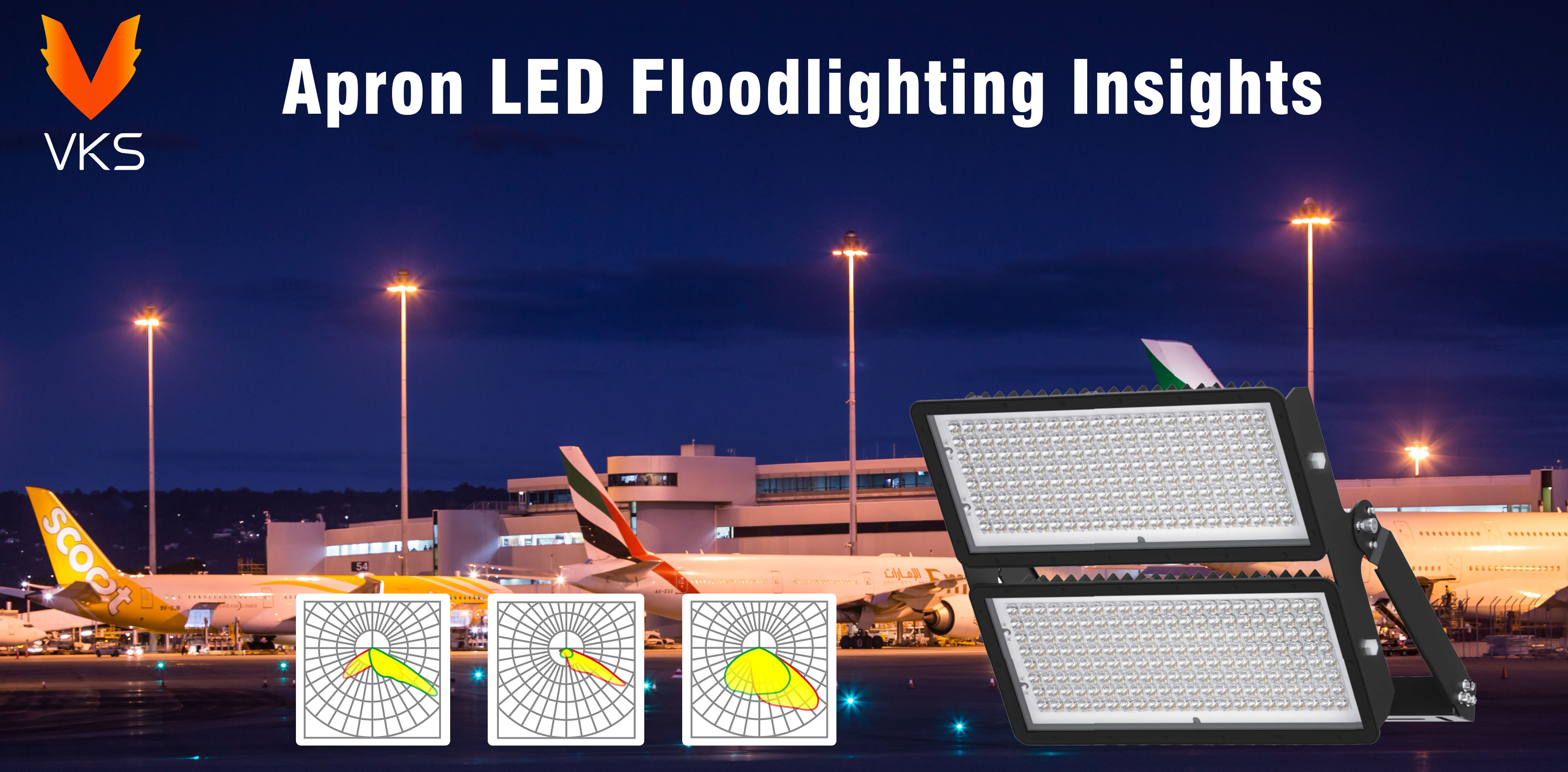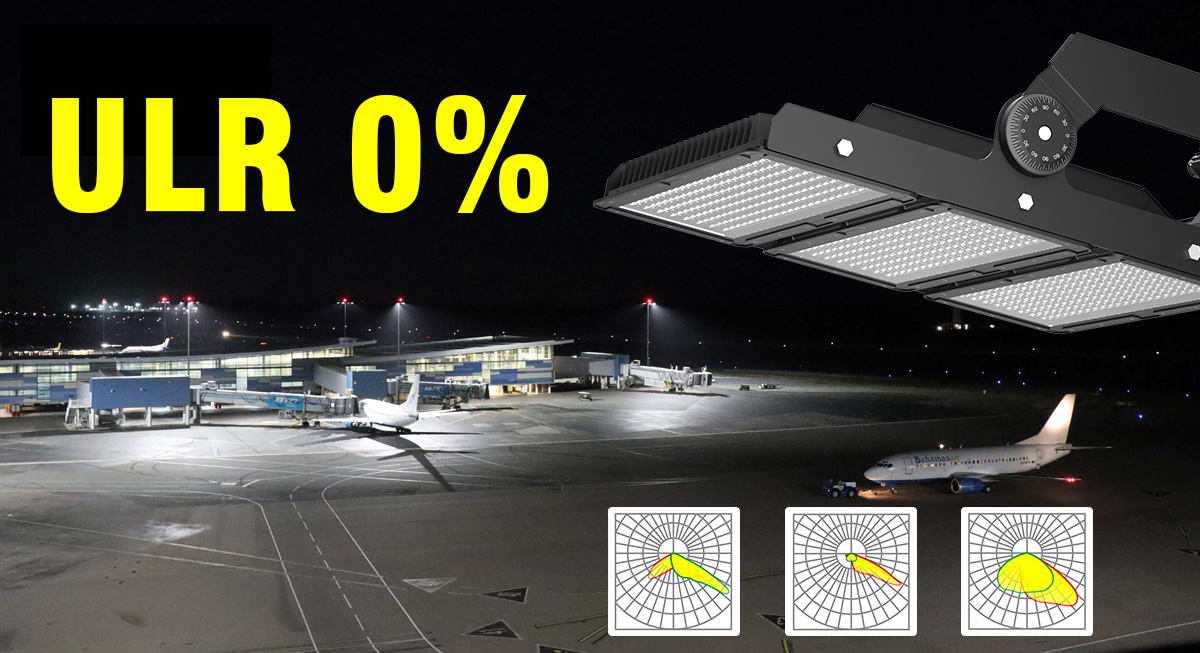Over the years, we have been at the forefront of LED lighting innovation, providing solutions to a diverse range of aviation clients. From global transport hubs to local airports, our expertise is unmatched. Our proficiency in crafting Apron LED floodlighting solutions for airport aprons is unparalleled.
Herein are some of the insights we’ve garnered throughout our journey in apron LED floodlighting projects.
Lesson 1: Apron LED floodlighting should primarily be dictated by design.
Those employed in the airfield sector of an airport are likely to be acquainted with Airfield Ground Lighting (AGL). These are quite conventional commodities. Regardless of the supplier, attributes such as their output, dimensions, and optics tend to be nearly identical.
However, it is not the same with LED floodlights. One cannot presume that a 600W floodlight from one manufacturer will function identically to a 600W floodlight from a different manufacturer. In reality, their performance can vary significantly.
This implies that you cannot approach a prospective supplier and request, We received a design from another supplier that uses 123 units of 400W floodlights. Could you provide us with an estimate for the same quantity to serve as your competitive proposal?
Regrettably, it’s not as simple as just using any floodlight. The performance of these lights differs based on their photometry and efficacy, which refers to the effectiveness of the light they project onto surfaces. Consequently, a 400W floodlight equipped with appropriate optics could outperform a stronger 600W variant.

It’s crucial to evaluate the long-term performance of products. While LED lights also experience degradation like sodium or metal halide lights, their rate of wear is significantly slower. However, understanding the extent and time frame of this degradation is essential. This varies from one manufacturer to another and is greatly influenced by the operating environment.
In essence, it is crucial for a manufacturer’s project design and estimate to be grounded in the reality of their genuine products. Without this, any attempt at comparison becomes futile. To encapsulate the point – avoid juxtaposing disparate elements like apples and oranges.
Lesson 2: Test on site, assess and verify
Proceeding to the subsequent stage of a project, you’ve selected a provider. Their blueprint appears successful theoretically and it satisfies or surpasses your demands while remaining within your budget. You give approval for its execution and it’s accomplished.
It might seem like the task is complete at this point, but there’s more to do. You must verify that the actual outcome aligns with what was pledged during the design stage and genuinely adheres to or surpasses your local aviation authority’s stipulations.
To illustrate this point, let’s consider the case of Istanbul Airport. They were in need of a Apron LED floodlighting upgrade and invited ten leading suppliers to submit their proposals. A key part of the evaluation process involved each supplier erecting two sample light poles to confirm their ability to meet the compliance standards as presented in their design blueprints. However, eight out of ten suppliers failed to pass this practical test. Needless to say, the Airport Authority was extremely grateful for implementing such a rigorous testing procedure.
It’s essential that you consistently examine and confirm the adequacy of your lighting, utilizing a well-documented testing procedure, to ensure it remains in compliance.
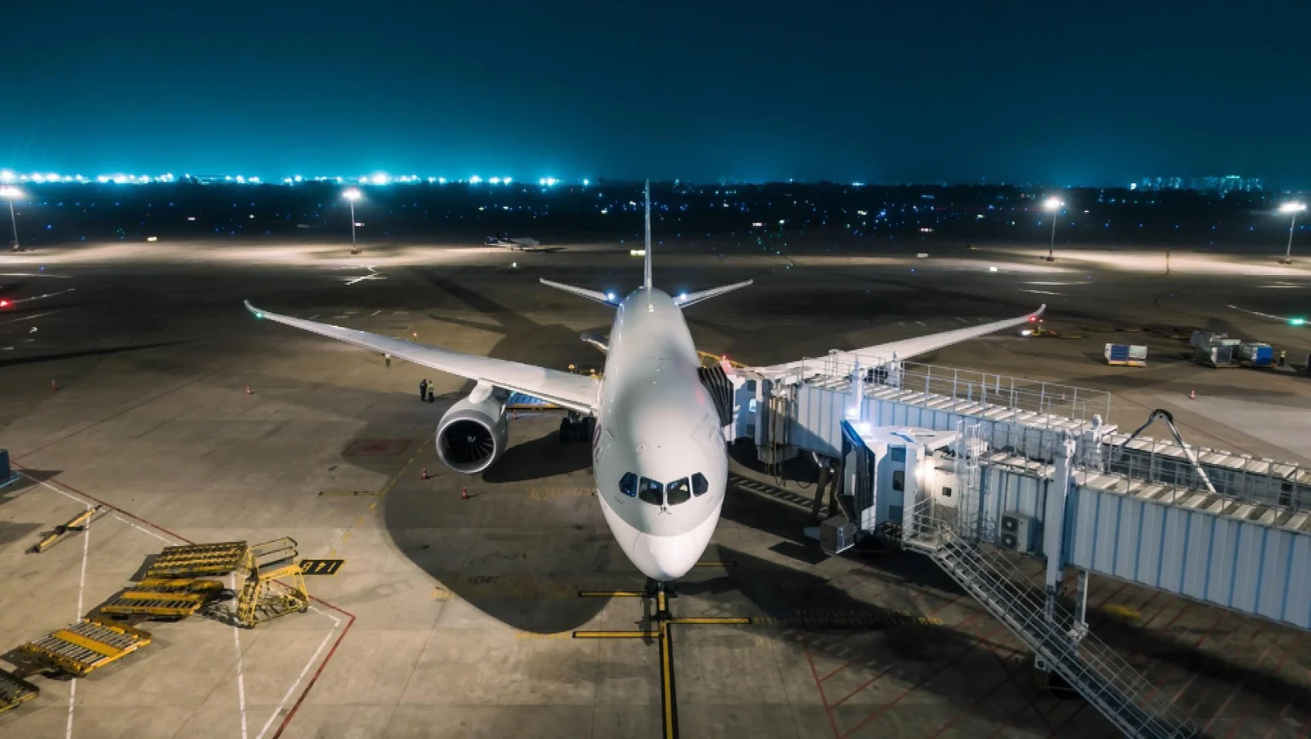
To illustrate, a new system was implemented at Frankfurt Airport during the winter season. Upon conducting live trials, it was verified that the system met the necessary light levels. Interestingly, it even surpassed the requisite levels as a contingency had been factored into its design. However, when these tests were repeated six months later in summer, there was a 20% drop in light levels. Despite this decrease, the lighting remained within acceptable limits due to the previously incorporated buffer. Nonetheless, this unexpected drop sparked concern within airport authorities about potential implications in future months and years. When they conducted another round of tests during the subsequent winter season, they found that lighting had returned to its initial levels.
They concluded that fluctuations in ambient temperature between seasons were influencing these changes. By incorporating this variable into their testing methodology, they were able to establish accurate benchmarks for future comparisons and maintain consistency across successive tests.
It’s crucial to consistently perform checks, assessments, and confirmations to ensure ongoing adherence to rules. Additionally, exceeding the stipulated standards is always a commendable approach.
Lesson 3: Optics choosing
The nemesis of every airport is glare. It primarily impacts pilots, resulting in not only discomfort but potential transitory blindness that can precipitate accidents. Consequently, from a health and safety perspective, the mitigation of glare is a paramount consideration for airports. This underscores the vital role of optics utilized in this context.
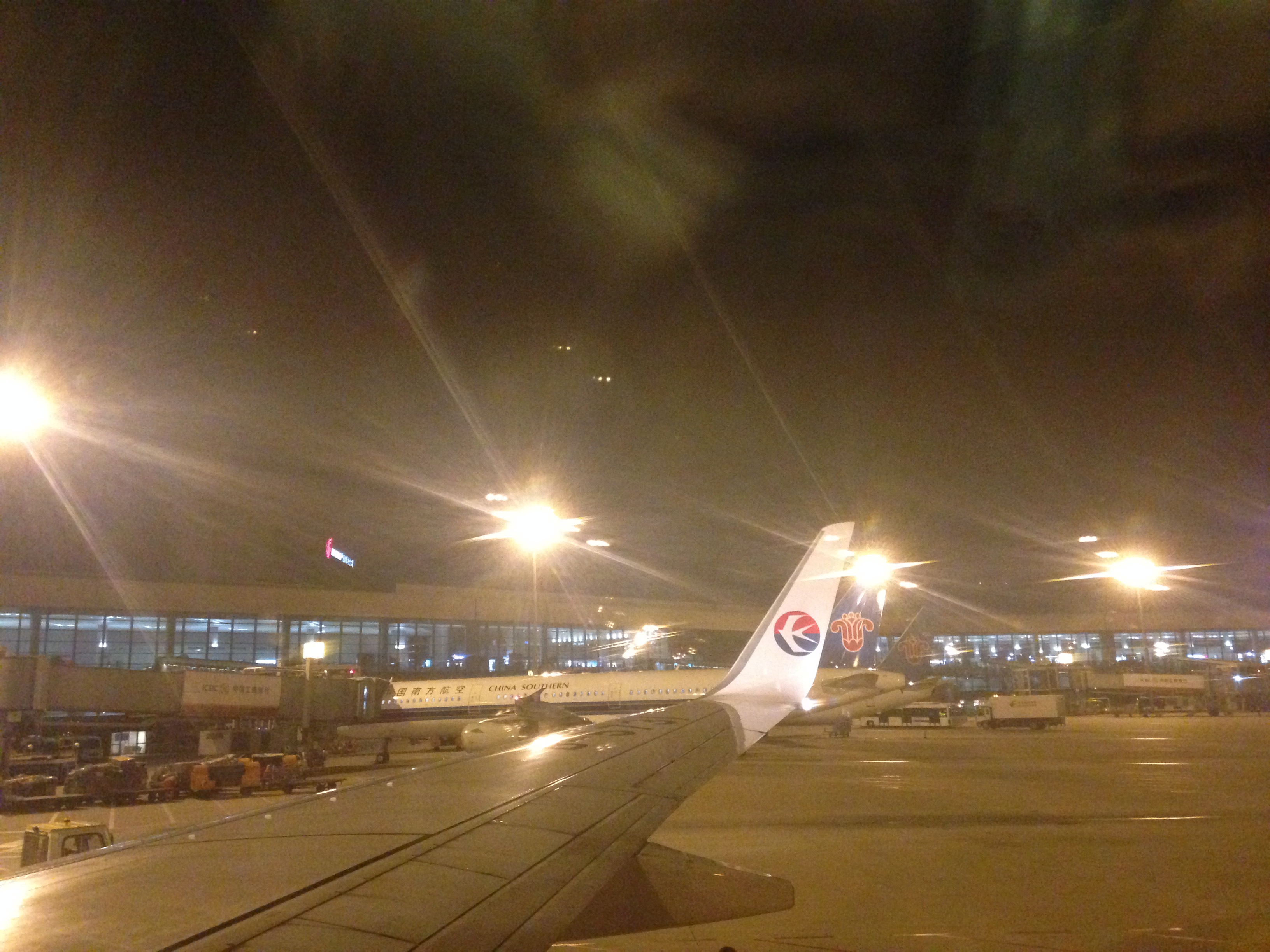
For nearly all of our ventures, we’ve relied on our unique asymmetric optics. The reason is quite straightforward – they provide a wide-angle, low-glare output that surpasses symmetric optics. Furthermore, to minimize potential glare problems, we ensure these optics are fully cut-off above the horizontal plane. Consequently, this results in reduced glare not only for aviators but also for ground personnel.
Lesson 4: Pay cheap at first, pay twice later
Engineers, in most projects, prefer utilizing top-tier materials to ensure the highest quality results. On the other hand, financial departments typically prioritize cost considerations, which can potentially lead to complications.
Numerous accounts have reached us where the main factor in selecting a specific vendor’s solution was the budget. There was one instance where the lighting fixture’s inadequate heat dissipation led to the LEDs overheating to such an extent that they detached from their circuit board.
In a different scenario, inexpensive Apron LED floodlighting were utilized, however, almost all of them malfunctioned within half a year. These were replaced under the warranty terms. Yet, in another half-year period, they experienced failure once more. To rectify this recurring issue permanently, it became necessary for the airport to sanction a new budget for a costlier but more durable alternative.
Your crucial infrastructure includes Apron LED floodlighting. It’s essential not to allow financial constraints dictate your decisions regarding it. Opting for a less expensive system might seem appealing, but the ongoing maintenance expenses can swiftly surpass its initial cost. Consider a scenario where an accident occurs on the apron due to substandard lighting; the resulting legal fees could be astronomical.
High-quality goods typically have a longer lifespan than inferior ones. Moreover, providers of these superior products tend to outlive their competition. Opting for less expensive options might lead to issues in the future and when that happens, the chosen company might no longer be available to rectify the situation.
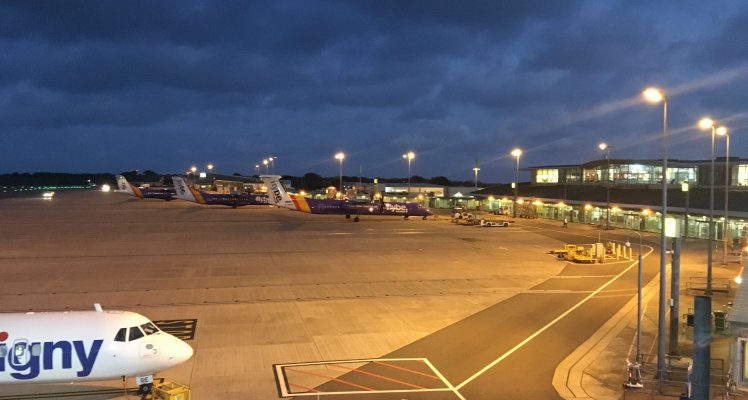
In the pursuit of maximizing their profit margins, contractors consistently strive to minimize expenses. Often, this involves substitifying specified design elements with less expensive alternatives. However, this cost-cutting measure can inadvertently elevate your risk. It’s crucial not to allow such practices. Insist on adherence to the original specifications to ensure your requirements are appropriately met.
The key takeaway here is that sacrificing quality may lead to significantly higher costs over time.
Lesson 5: Integrated or remote drivers
We frequently receive this inquiry: Should the drivers be located within the light fixtures or in a distinct compartment?
Both options carry their own sets of advantages and disadvantages. The location of your airport can also factor into your decision. For instance, integrated drivers are predominantly used in the UK, Italy, and Germany while remote drivers are the preferred choice in France and the US. Therefore, it is crucial to ensure that your supplier provides both alternatives to cater to your specific needs.
It’s crucial to bear in mind that Apron LED floodlighting systems can be severely damaged by voltage spikes. This underscores the significance of surge arrestors. Ensure that your provider’s remote or integrated solution is designed with the capacity to handle and safeguard against voltage spikes.
Lesson 6: Smart control
It is a common belief that control systems are essential. However, it’s critical to evaluate their actual necessity. Prior to incorporating a control system into your project specifications, consider the following:
Determine who will manage these systems. Is there a requirement for specialized training to operate them? Is round-the-clock support necessary in the event of unforeseen issues?
Consider the value of the information they can provide. Does it significantly contribute to your operational efficiency? Implementing control systems involves certain expenses. If their functionality is limited to merely switching your lights on and off, their utility may not justify the cost.
Lesson 7: Color temperature, yellow or white ?
We frequently receive inquiries about whether yellow or white light is superior for fog dissipation. Common belief tends to favor yellow light. However, the reality is that both types of light perform identically in this regard.
The average size of fog droplets is significantly smaller than that of cloud droplets. However, when compared to the wavelengths of visible light, these fog droplets are considerably large. As a result, the scattering of light by fog does not depend on its wavelength. This scientific fact has been acknowledged by car manufacturers for a long time, which explains their decision to stop using yellow fog lights.
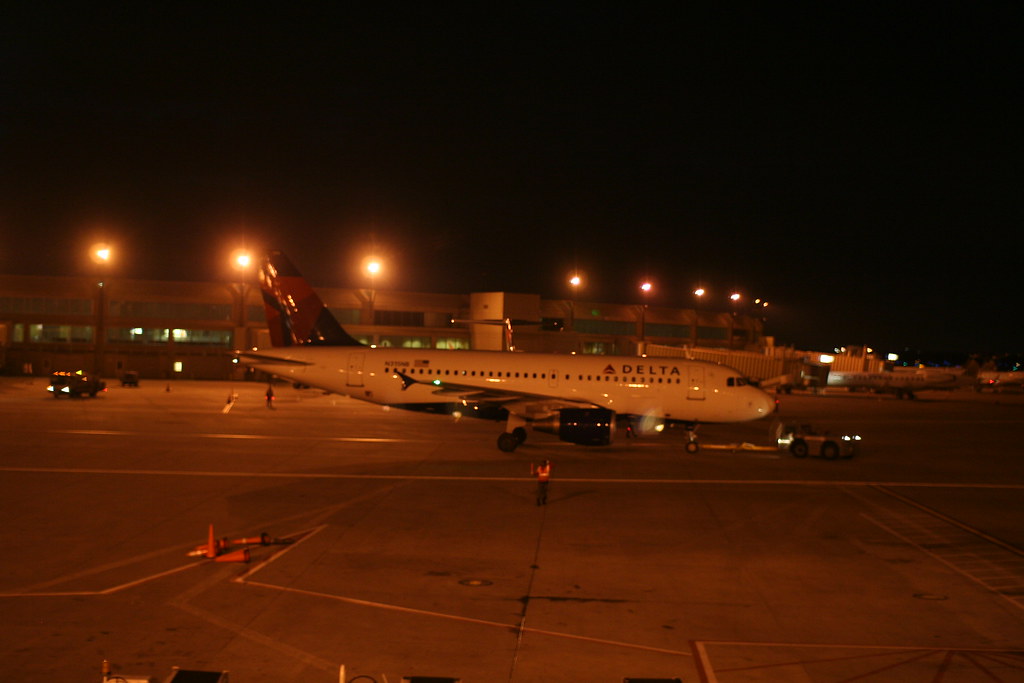
Post time: Dec-28-2023

